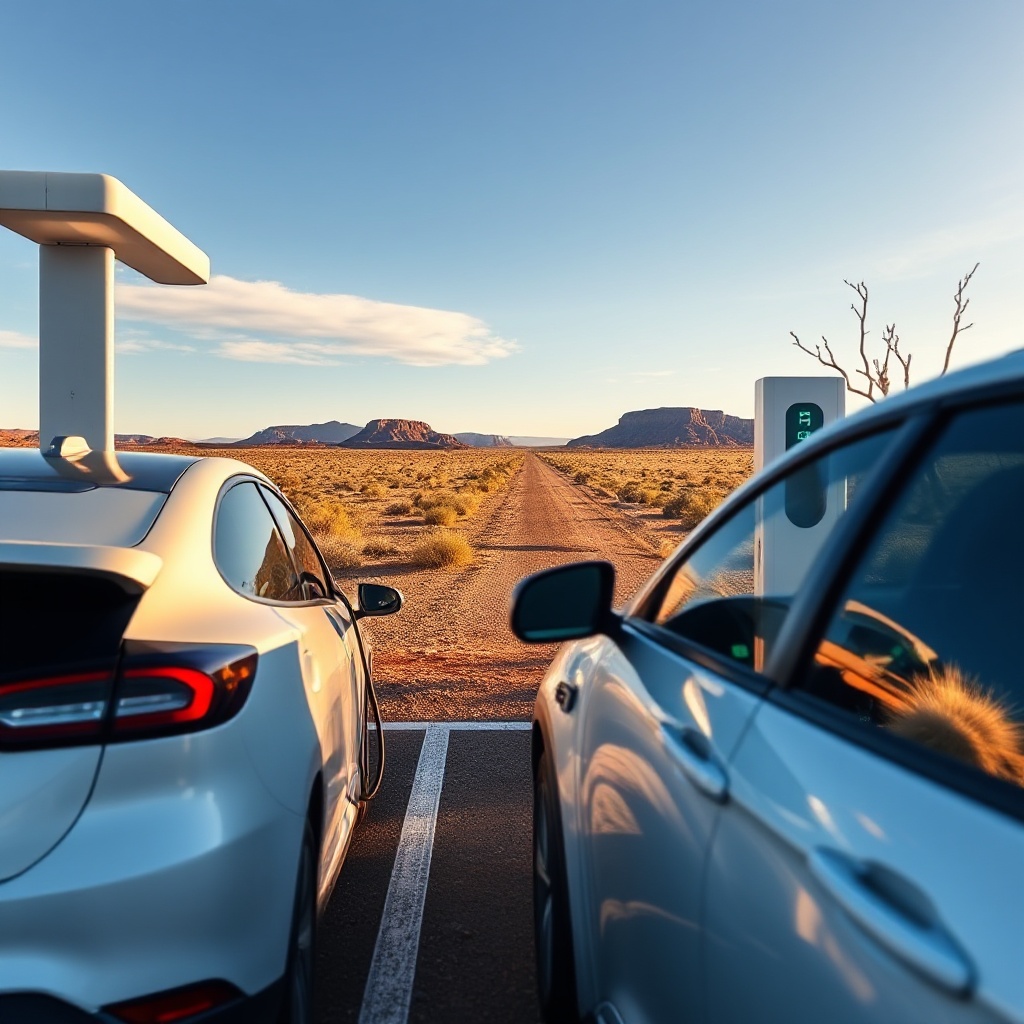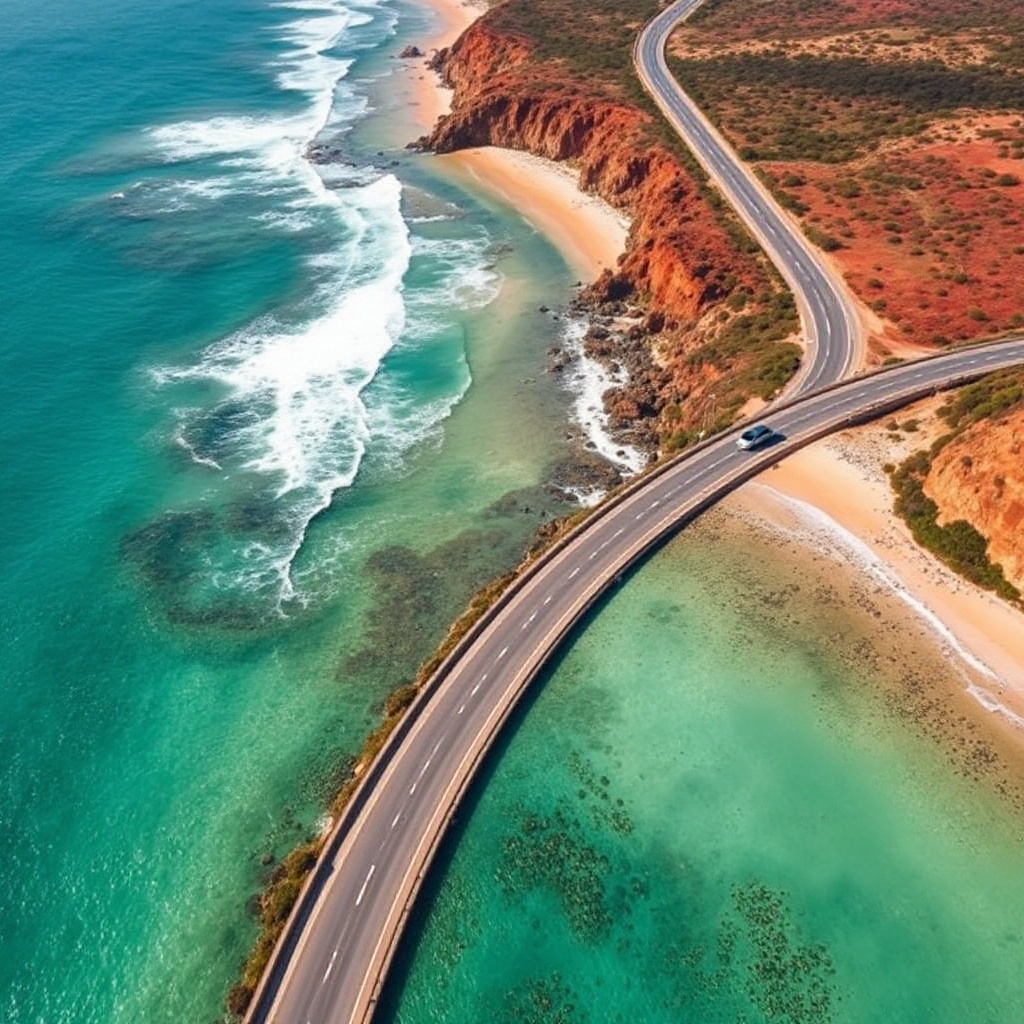
Western Australia's EV market surges 692% with 25,000 registrations as rebate scheme ends. State shifts focus to expanding its 7,000km charging network to maintain momentum toward net zero goals.

Drivetech Partners
Western Australia's electric vehicle market has experienced unprecedented growth with nearly 25,000 EVs now registered in the state, representing a staggering 692% increase since December 2021. As the state's successful Zero Emissions Vehicle rebate scheme approaches its conclusion in May 2025, Western Australia looks toward sustaining this momentum through expanded charging infrastructure and innovative policies designed to transform electric vehicles from an emerging technology to a mainstream transportation option.
Key Takeaways
WA's $3,500 ZEV rebate scheme ends May 10, 2025, having paid over 11,868 rebates totaling more than $41.5 million in support
Western Australia has built one of the world's longest connected electric highways spanning 7,000 kilometers with 110 charging points
EV market share in WA reached 7.8% in 2023, outpacing the national average growth
Future growth strategy focuses on charging infrastructure expansion and innovative financing solutions rather than direct rebates
Strategic planning for EVs is critical to meeting WA's net zero emissions target by 2050
WA's EV Rebate Scheme: A Successful Catalyst
The Western Australian Zero Emissions Vehicle (ZEV) Rebate Scheme has proven to be a powerful catalyst for EV adoption. Offering $3,500 rebates for new zero-emission vehicles priced under $70,000, the program initially targeted 10,000 vehicles but exploded in popularity, necessitating an additional $14.7 million top-up in the 2024-25 State Budget. By March 2025, over 11,868 rebates had been paid, with total scheme investment reaching $51.2 million.
Originally capped at 10,000 vehicles, the cap was removed due to soaring demand while maintaining the May 10, 2025 end date. The scheme has successfully fulfilled its mission to jumpstart EV adoption in the state, with no further state-based upfront cash incentives planned after its conclusion.

Record-Breaking Growth in Western Australia
The impact of the rebate scheme can't be overstated. Western Australia now hosts over 25,000 registered electric vehicles, representing a remarkable 692% increase since December 2021. This growth places WA among the fastest adopters of electric vehicles in Australia, with the state's EV market share climbing to 7.8% in 2023 from just 3.4% the previous year.
This trend has outpaced national averages, though recent data shows signs of slowing momentum across Australia. Nationally, 180,000 EVs were sold in 2023, capturing an 8.5% market share. However, early 2025 figures indicate a declining EV market share, with only 4.4% of new vehicles sold in January 2025 being electric—the lowest rate since October 2022.
This potential slowdown highlights the importance of transitioning from initial purchase incentives to more sustainable, long-term support mechanisms.

World-Class Charging Infrastructure: The WA EV Network
Perhaps the most enduring legacy of Western Australia's EV strategy is its remarkable charging network. The state now features one of the world's longest connected electric highways: a 7,000 km route with 110 charging points across 49 locations. This extensive network connects regional and remote areas with chargers spaced approximately every 200 km, making long-distance EV travel practical throughout the vast state.
Many isolated charging locations are powered by standalone systems using solar and battery storage, demonstrating an innovative approach to clean transportation in remote areas. The network, delivered by Horizon Power and Synergy with state government funding, addresses the critical issue of range anxiety while supporting regional tourism and local economies.
This infrastructure investment represents a strategic shift from subsidizing vehicle purchases to building the foundation for sustainable EV adoption across the entire state.
Post-Rebate Strategy: Sustaining EV Momentum
As the rebate scheme winds down, Western Australia's focus is shifting to comprehensive support mechanisms that address the broader challenges of EV adoption. These include:
Expanded and more reliable charging infrastructure, especially for long-distance travel and residential settings
Innovative financing solutions to address upfront cost barriers and residual value risk
Policy measures to support second-hand EV market development
Ensuring equitable access for rural and lower-income communities
Continued expansion of the WA EV Network
The transition from rebates to infrastructure support reflects a maturing EV market where consumer confidence depends less on purchase incentives and more on the practical experience of owning and operating electric vehicles. By addressing charging access, financing, and second-hand market development, Western Australia aims to broaden EV appeal beyond early adopters to mainstream consumers.
Government Commitments and Future Challenges
The Western Australian government has set ambitious targets for its own fleet, aiming for at least 25% of new light and small passenger, and medium SUV government vehicles to be electric by 2025/26. This commitment demonstrates leadership while creating demand that can help sustain the EV market after rebates end.
However, challenges remain. A road user charge of 2.5c/km for EVs will be introduced in WA from July 1, 2027, which may impact the cost equation for potential buyers. Strategic planning is essential to reach WA's legislated net zero emissions target by 2050, with EVs playing a critical role in decarbonizing the transport sector.
Maintaining growth trajectory without rebates requires a comprehensive policy approach that balances revenue needs with continued incentives for clean transportation adoption.

Industry Recommendations for Continued Growth
Industry stakeholders have called for targeted support measures to replace the broad rebate program. These include grants supporting EV charger installation in existing buildings and apartment complexes, where lack of charging access remains a significant barrier to adoption.
Support for local councils to expand public charging networks could also help address disparities in charging availability between affluent and disadvantaged areas. The strong community uptake and rapid infrastructure rollout to date illustrate growing confidence in EVs, but sustaining this momentum requires addressing the next layer of adoption barriers.
While pure electric vehicles face some market headwinds, hybrid vehicles remain strong competitors, accounting for 17.1% of sales nationally compared to battery electric vehicles' smaller share. This suggests that transitional technologies continue to play an important role in the shift toward electrification.
Economic and Environmental Benefits of Sustained EV Adoption
The push for continued EV adoption in Western Australia is driven by both environmental and economic imperatives. Electric vehicles are critical to achieving WA's 2050 net zero emissions target, representing one of the most significant opportunities for climate action in the transportation sector.
Beyond environmental benefits, the expanded charging network encourages EV travel beyond metropolitan hubs, boosting regional economies through increased tourism and local spending. The transition also creates local jobs in installation and maintenance of charging infrastructure, while decreasing dependence on imported fuel improves energy security and trade balance.
These multiple benefits help justify continued government support even after direct purchase incentives end, highlighting EVs as an investment in Western Australia's economic and environmental future.
The EV Transition: From Early Adopters to Mainstream
The rebate scheme has successfully accelerated the early adoption phase of EVs in Western Australia. The next phase requires addressing the concerns of mainstream consumers, including range anxiety, charging access, and upfront costs.
Making EVs accessible across diverse socioeconomic groups will be critical to sustaining growth, as will education and awareness campaigns highlighting total cost of ownership benefits. Building confidence in residual values and developing a robust second-hand market will be crucial for mainstream acceptance.
Western Australia's transition from rebates to infrastructure and policy support represents a mature approach to EV adoption—recognizing that while incentives can jumpstart a market, long-term success depends on creating systems that make electric vehicles a practical and attractive option for all drivers.
Sources
transport.wa.gov.au/projects/zero-emission-vehicle-zev-rebate.asp
fleetevnews.com.au/wa-powers-down-electric-vehicle-rebate-scheme-last-of-the-state-cash-incentives
pv-magazine.com/2025/02/03/australia-opens-longest-connected-ev-highway-network
fleetevnews.com.au/ev-sales-stall-whats-holding-australia-back






